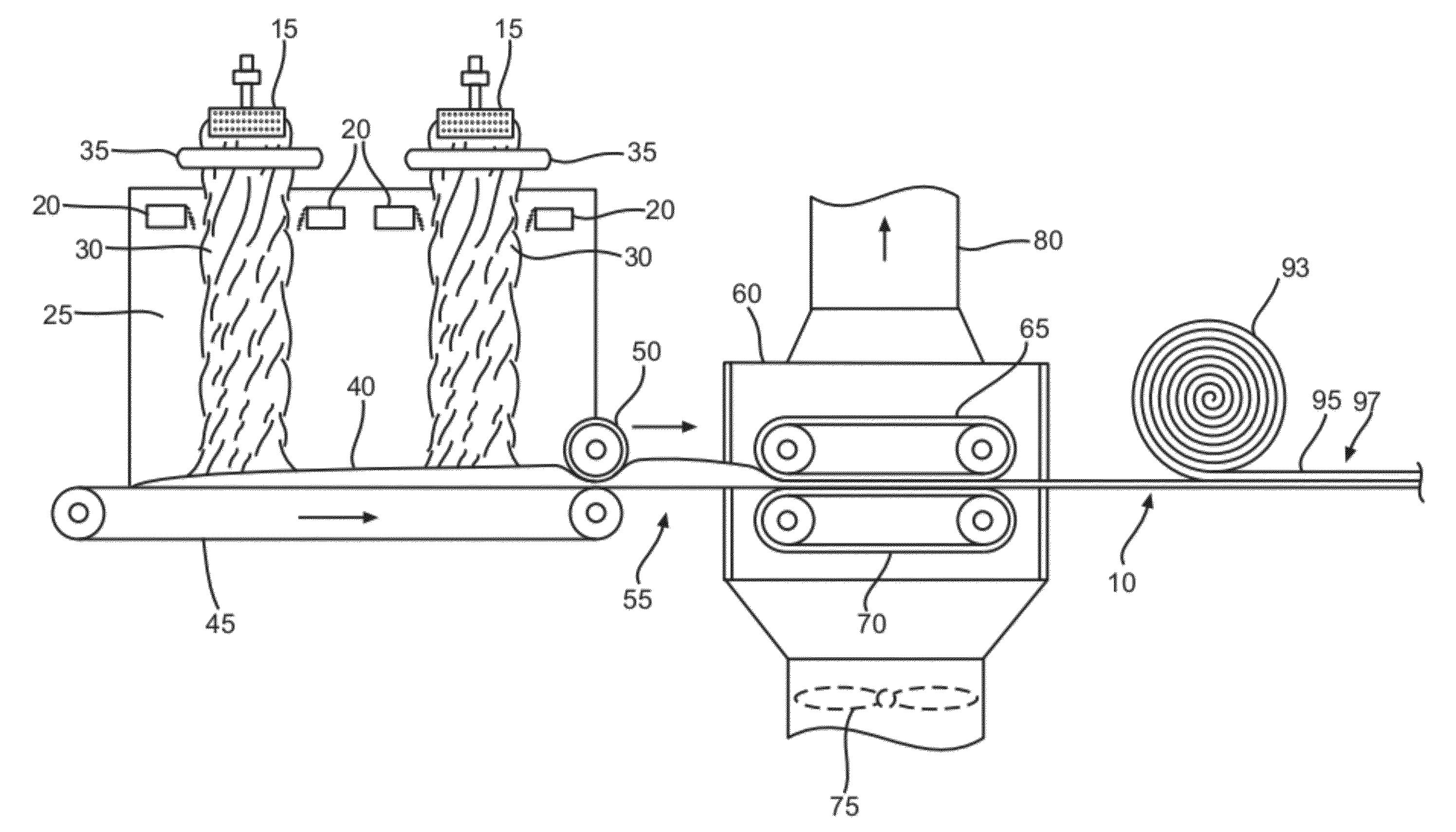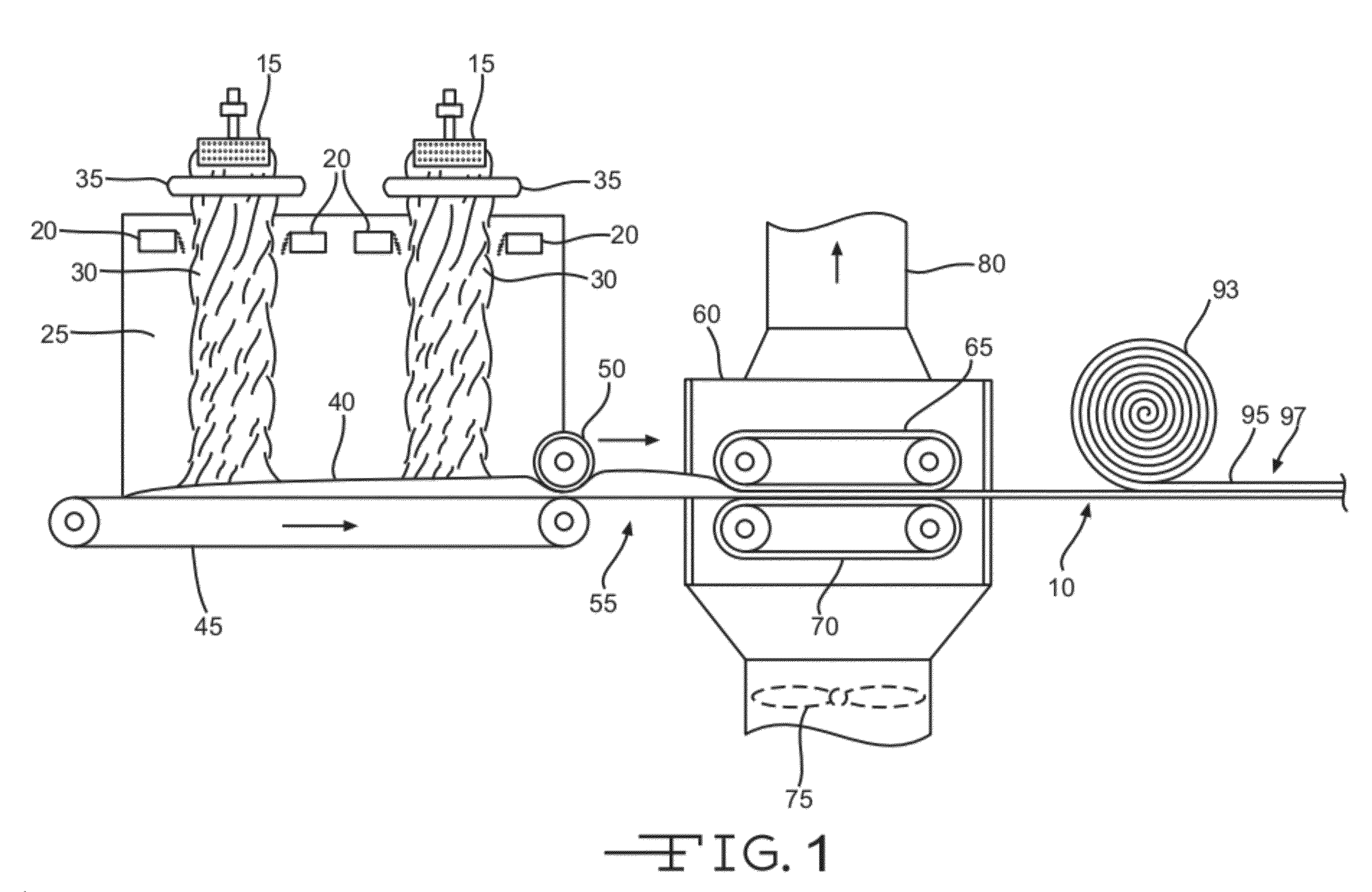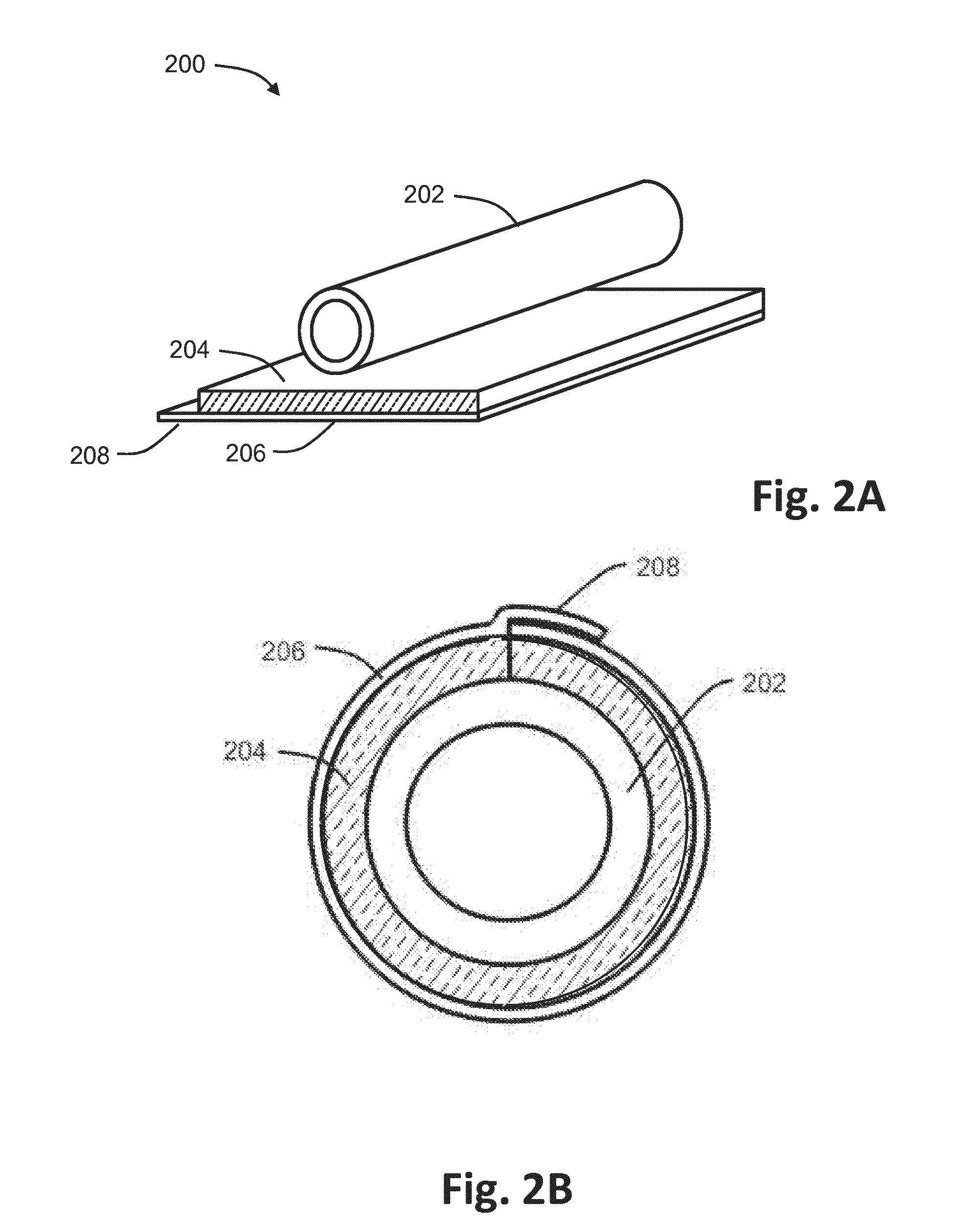Use of silicones to improve fiberglass insulation products
a technology of silicone and fiberglass insulation, applied in the field of fiberglass insulation, can solve the problems of infiltration of insulation, less effective insulation than intended, staining and/or discoloration of the finished surface, etc., and achieve the effects of improving water resistance, improving stain resistance, and improving adhesion
- Summary
- Abstract
- Description
- Claims
- Application Information
AI Technical Summary
Benefits of technology
Problems solved by technology
Method used
Image
Examples
example 1
Preparation of a Binder
[0096]Four sample binders are prepared having the formulations described in Table C, below. Samples 1 and 2 have the same DE, but different ratios of maltodextrin (MD) to citric acid crosslinker (CA); samples 2 and 3 have the same ratio of MD to CA but a different DE. Sample 4 is a polyacrylic acid (PA) binder rather than a carbohydrate based binder. Samples 1 to 4 are prepared in duplicate, once with and once without the reactive silicone component for comparative purposes. The reactive silicone is blended into the oil emulsion; other solids and solutions are gradually blended into the water with agitation.
TABLE CBinder FormulationsSample 1Sample 2Sample 3Sample 470:30 MD-CA 55:35:10 MD-CA-55:35:10 MD-CA-55:45w / 5% SHPG w / 5% SHPG w / 5% SHPMD-PAComponent(DE = 11)(DE = 11)(DE = 5)(DE = 11)Maltodextrin (MD)-1237.8 lbs 972.5 lbs—1020.9 lbsDE = 11 (50% Solids)Maltodextrin (MD-—— 972.5 lbs—DE = 5 (50% Solids)Citric Acid (CA) 530.5 lbs 618.9 lbs 618.9 lbs—(50% Solids)...
example 2
Testing for Stain / Discoloration
[0097]Ceiling tiles are prepared with sample binders from Table C. Tile sample 2 was prepared with binder sample 2 with the DF1040 reactive silicone. Tiles samples 1, 3 and 4 were prepared with binder samples 1, 3, and 4, respectively, without the reactive silicone. A 10 ml quantity of water was poured onto the ceiling tiles in several locations. Brown stain spots appeared in several locations in tile samples 1, 3 and 4. Tile sample 2, with the reactive silicone, produced significantly less staining than the tile samples without silicone. The results are displayed in portions of the tiles shown in FIGS. 7A to 7D, wherein 7A is from tile sample 1, 7B is from tile sample 2, 7C is from tile sample 3 and 7D is from tile sample 4.
example 3
Testing for Facing Adhesion
[0098]Ceiling tiles are prepared with sample binders from Table C. Tile sample 2 was prepared with binder sample 2 with the reactive silicon; tile sample 3 was prepared with binder sample 3 without the reactive silicone; and tile sample 4 was prepared both with (4+) and without (4-) the reactive silicone. A facer layer was applied to the fibrous product substrate using a proprietary water-based adhesive. An Instron tensile strength instrument was used in a 90 degree peel test to measure the adhesive strength. The results, displayed in Table D below, show that the reactive silicone of sample 4 produced a marginal increase in adhesion strength. Although the DE varies in samples 2 and 3, the ratio of MD to CA does not and this reactive silicone produced a market improvement in adhesion.
TABLE DCeiling tiles and adhesive peel test resultsSampleReactiveMax LoadAverage Load#Binder Used in the BoardSilicone(lbs)(lbs)2.55:35:10 MD-CA-G Yes0.8890.299w / 5% SHP (DE = 1...
PUM
| Property | Measurement | Unit |
|---|---|---|
| Mass | aaaaa | aaaaa |
| Mass | aaaaa | aaaaa |
| Mass | aaaaa | aaaaa |
Abstract
Description
Claims
Application Information
 Login to View More
Login to View More - R&D Engineer
- R&D Manager
- IP Professional
- Industry Leading Data Capabilities
- Powerful AI technology
- Patent DNA Extraction
Browse by: Latest US Patents, China's latest patents, Technical Efficacy Thesaurus, Application Domain, Technology Topic, Popular Technical Reports.
© 2024 PatSnap. All rights reserved.Legal|Privacy policy|Modern Slavery Act Transparency Statement|Sitemap|About US| Contact US: help@patsnap.com










